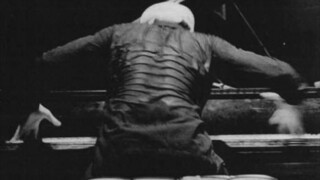Cecil Taylor 1929-2018
Philip Clark
In May 2002, the free jazz pianist Cecil Taylor performed at the Barbican with the post-minimalist classical ensemble Bang on a Can All-Stars. I managed to slip backstage during the rehearsal. It was tense. Taylor, wearing a dressing gown and pink fluffy slippers, was in the process of firing half the ensemble. Bang on a Can’s keyboard player had already gone, and a procession of other players would soon follow. Their sin seemed to have been to read Taylor’s graphic sketch for how the evening’s music might evolve too literally. With the concert itself underway, Taylor ritualistically shredded his sketch and encouraged the remaining Bang on a Can musicians to do the same: they were going to have to improvise. A hapless guitarist threw a rock riff at Taylor, which he immediately bounced back as an open-ended question: is that the best you can do? Then he turned his back on the ensemble and carved out a cavernous wall of sound with his own drummer, Tony Oxley.
The drummer Sunny Murray once said that ‘Cecil was the first man to play piano like it wasn’t a European instrument.’ The insight starts to explain why Taylor’s music has so often proved to be a source of controversy. There is a grain of truth in the cliché that he transformed the piano into ‘88 tuned drums’, but his revolutions in harmony and rhythm were built on a keyboard technique so dextrous and nimble that pianos bent to his will.
Taylor, who died yesterday, aged 89, could be cagey in interviews about his formative years on Long Island. He would speak fondly of a favourite uncle who played stride piano in the style of Fats Waller, but was usually reluctant to discuss the period he spent at the New England Conservatory in Boston studying piano and percussion. Beyond doubt, though, Taylor’s mature obsessions were already formed when he cut his first album, Jazz Advance, in 1956. Love For Sale and Looking Ahead! (both from 1959) hastened the advance. At a time when some in the jazz commentariat were still struggling to reconcile themselves with Thelonious Monk, Cecil relished messing with their minds.
Did his music swing as jazz was ‘supposed’ to? No it didn’t – but Taylor knew that. ‘Rick Kick Shaw’ from Jazz Advance has his fingers bouncing against the solid beat of the rhythm section like it’s a trampoline, the elasticity of his time counting against any regularity of groove. His early albums still conformed to the format of a collection of short, self-contained pieces, with an occasional reassuring standard. But by November 1962, when Taylor’s trio – with Murray on drums and Jimmy Lyons on alto saxophone – took up a residency at the Montmartre Jazzhus in Copenhagen, even that norm had been torpedoed. The trio’s urgency remains undiminished even through the lo-fi crackle of the recording (issued eventually as Nefertiti, the Beautiful One Has Come). Structures and long-form scale were now being generated through the group discovering what the music needed to be in the moment of performance. ‘D Trad, That’s What’, may contain Taylor’s finest solo on record: listen to the extreme independence of his hands, and the erratic, elastic approach to pulse, questioning all of our assumptions about rhythm.
When the jazz critic Stanley Crouch outed Taylor in 1982, he said that the three-letter word 'gay' was insufficient to express his humanity. Similarly, the four-letter word 'jazz' is insufficient to describe his music.
The mainstream jazz ‘business’ would throw Taylor an occasional bone. He stirred things up at the 1957 Newport Jazz Festival and, a year later, was persuaded to record an album with John Coltrane – a promising idea on paper, but in reality Taylor and Coltrane had little to say to each other. In 1966 he recorded a pair of albums for Blue Note, Unit Structures and Conquistador!. They work with both written material and improvisation, but Taylor had no interest in instigating a polite conversation between the two. The written material is moulded and altered by the improvisation; the improvisers are moved in unforeseen directions as they collide with Taylor’s blocks of composed material.
The sensual and physical force of such music, with its plateaus of complexity, can feel overwhelming. But Taylor’s art was also a lesson in restraint. The tightrope precision of his playing, even when unleashing an apparently uncontrollable sound-mass, was formidable in its control. At any moment Taylor could step back, examine where he was, and reduce an improvisation to a single clarifying note or gesture.

Comments
As you might imagine I didn't stick around for the set I'd been exiled from, but I can well believe that everything else you recount is true, that at that point Cecil decided to chuck the score, and that he wouldn't have taken well to having a rock riff gratuitously thrown in his face!
Our short tour with Cecil (there was another performance, in Vienna, it went over very well, without incident or at least lasting trauma) was difficult but unforgettable, not my favorite week but one that left its mark. He's the kind of guy it's an honor to be fired by actually...